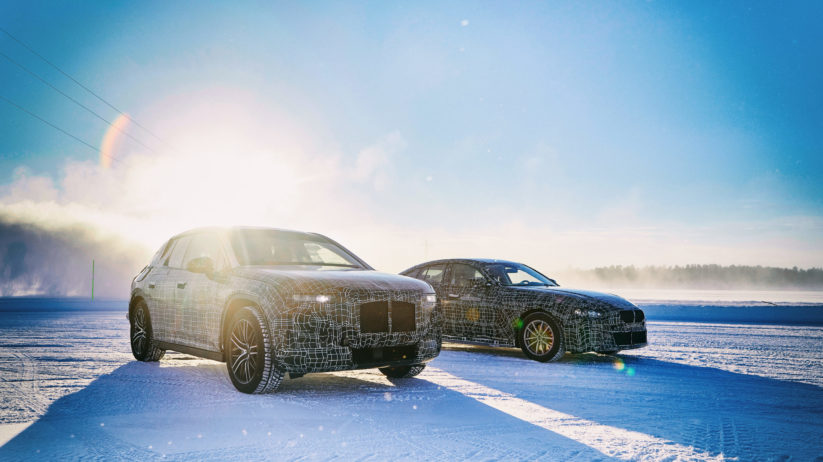Change is inevitable and ever-present. The Greek philosopher Heraclitus said as much 2,600 years ago. What he forgot to mention is that change hides within the joys and the hardships of everyday life, sneakily seeking the path of least resistance, propelled by the inexorable tide of technology. We need only to look around our current world to see that a new piece of technology often emerges like a slow trickle of water in otherwise stable rock, before it grows and grows until a raging river emerges, carving a canyon in its wake.
That’s how we get a 1,000-horsepower all-electric GMC Hummer EV.
If you haven’t seen the commercials yet, the drip-drop of automotive electrification has gained momentum and is preparing to punch a seven-foot hole through the oil-fueled walls of the past. The largest anti-electric symbol of the gasoline era will be reborn as a zero-emissions vehicle capable of keeping up with an M5 Competition on the way to 60 miles per hour.
Like most of us, I have read about the benefits and promises of the all-electric, autonomous—and possibly all-knowing—vehicle, but now it is clear that like the Borg from Star Trek, the EV will assimilate all before silently rolling over us on its way to the future. The year is 2020, we have reached the turning point in the pursuit of electrification.
And resistance is indeed futile.
BMW is certainly not immune, directing copious cash to electrifying its fleet. The iNext and i4 are on the horizon and will give us all a clear look into how change is affecting our favorite marque; the MINI Electric is already here. I truly hope that they maintain the fun-to-drive quotient and general excitement factor that has permeated the company since its inception.

This is the future heart of BMW. Let’s hope that they keep the soul intact.
They need to look good, too. Massive kidney grilles aside, the recent crop of vehicles have been pretty sharp. And despite being “just” a hybrid that is going on six years old, the i8 has demonstrated that the future of electrified BMW design could lead to some amazing aesthetics. To my eyes, based on the Tesla Model 3 and Porsche Taycan, there is plenty of room for improvement in the EV looks department.
But, hey, here in the present, before the crushing silence of electric vehicles everywhere, there is reason for the traditional automotive enthusiast to celebrate, and it sounds quite marvelous. Specifically, have you seen a video of the new X3 M or X4 M? My, oh, my, that new S58 motor sings! And while I have not yet had the privilege of taking one for a ride—something that I need to rectify very soon—the reviews almost unanimously praise the handling and steering, which bodes well for the upcoming M3 and M4.

I would happily use one of these as a daily driver and for the occasional fun blast on twisty roads.

This may be the last truly great inline six that BMW M produces, and I am still glad that they made it.
Of course, I am most interested in the rumored rear-wheel-drive-only versions of those cars, which should take that natural handling prowess to another level of fun. A vehicle powered solely by a gasoline-fueled engine and sporting rear-wheel drive with a manual transmission? Well, there won’t be many more of those in the coming years.
The signs of change are everywhere. After making the trip from Cleveland to Eastern Pennsylvania many times in the past year, I have stopped at practically every major exit at one time or another. At an otherwise normal fast-food-and-hotels stop in the middle of the Appalachian Mountains, there is a bank of electric-vehicle charging stations. Sitting between a Walmart and a Taco Bell, four green-and-blue beacons of the future light the way. Only twice I’ve seen cars charging there, but I would be lying if said I wasn’t tempted to pick up a hybrid BMW and make use of those charging stations.
There is a catch, however. If you want to know when technology has passed from curiosity to a cultural norm, look no further than government fees. Starting in 2020, all hybrid and fully electric vehicles are subject to additional annual registration fees. They are not minor, either: $100 a year for a hybrid and $200 for a pure electric. From the perspective of a new-BMW purchase, the cost is fairly minimal. But for anyone who was aiming to reduce ongoing expenses by buying a used Prius or Nissan Leaf, they could be in for a surprise come registration time.
When electric vehicles begin to outnumber gas and diesel-burners, where do you think those lost gasoline taxes will come from? A few hundred dollars a year is just the beginning.

“It is in changing that we find purpose.”—Heraclitus
Footnote: After six years of writing monthly for the BMW CCA, the inevitability of change has caught up with me as well. After much thought, this will be my last column. I am going to turn my extra attention towards my new job and continue to spend as much quality time with my family as possible. If the opportunity arises to write for BimmerLife again, or even return to writing an article or two for Roundel, I will happily take it. Until then, may we all keep enjoying our fellow club members and our BMWs, be they diesel, gasoline, hybrid, or electric.—Chris Doersen
[Photos courtesy BMW AG, Chris Doersen.]





















